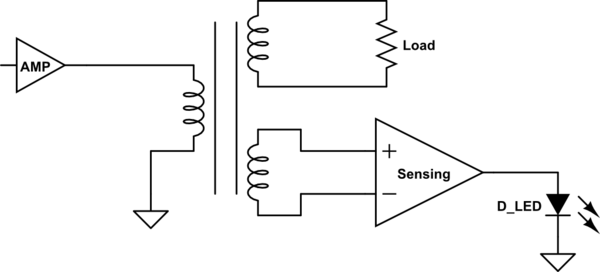I have a load box I use to test and burn in analog audio power amplifiers. Each load box is tailored for a specific amplifier circuit and for one of the load boxes I would like to add an LED that starts to illuminate when a certain output voltage is reached and get brighter as the output signal gets larger. The amplifier in question can produce signals as high as 200V peak to peak and drive loads as low as 4 ohms. I am running into an issue:
The output signal needs to be stepped down so that I can use an opamp based LED driver circuit running on +/-15V. The problem is.. a resistive voltage divider would alter the impedance seen by the amplifier output as it would be in parallel with the load resistor.
Is there any way to implement this LED without altering the overall load impedance?

